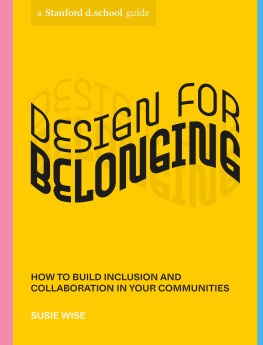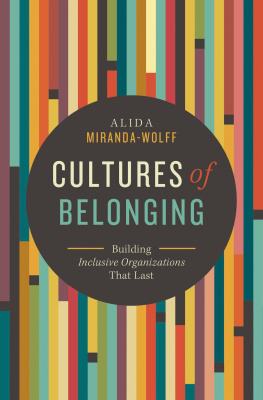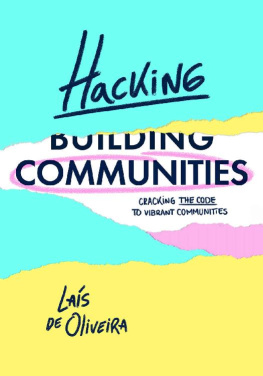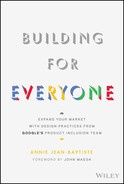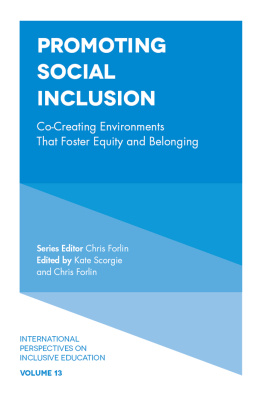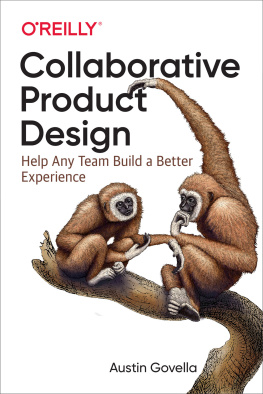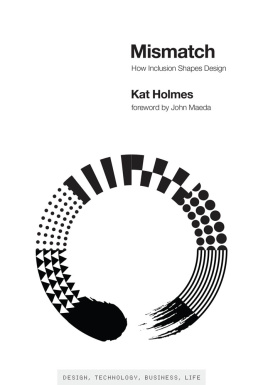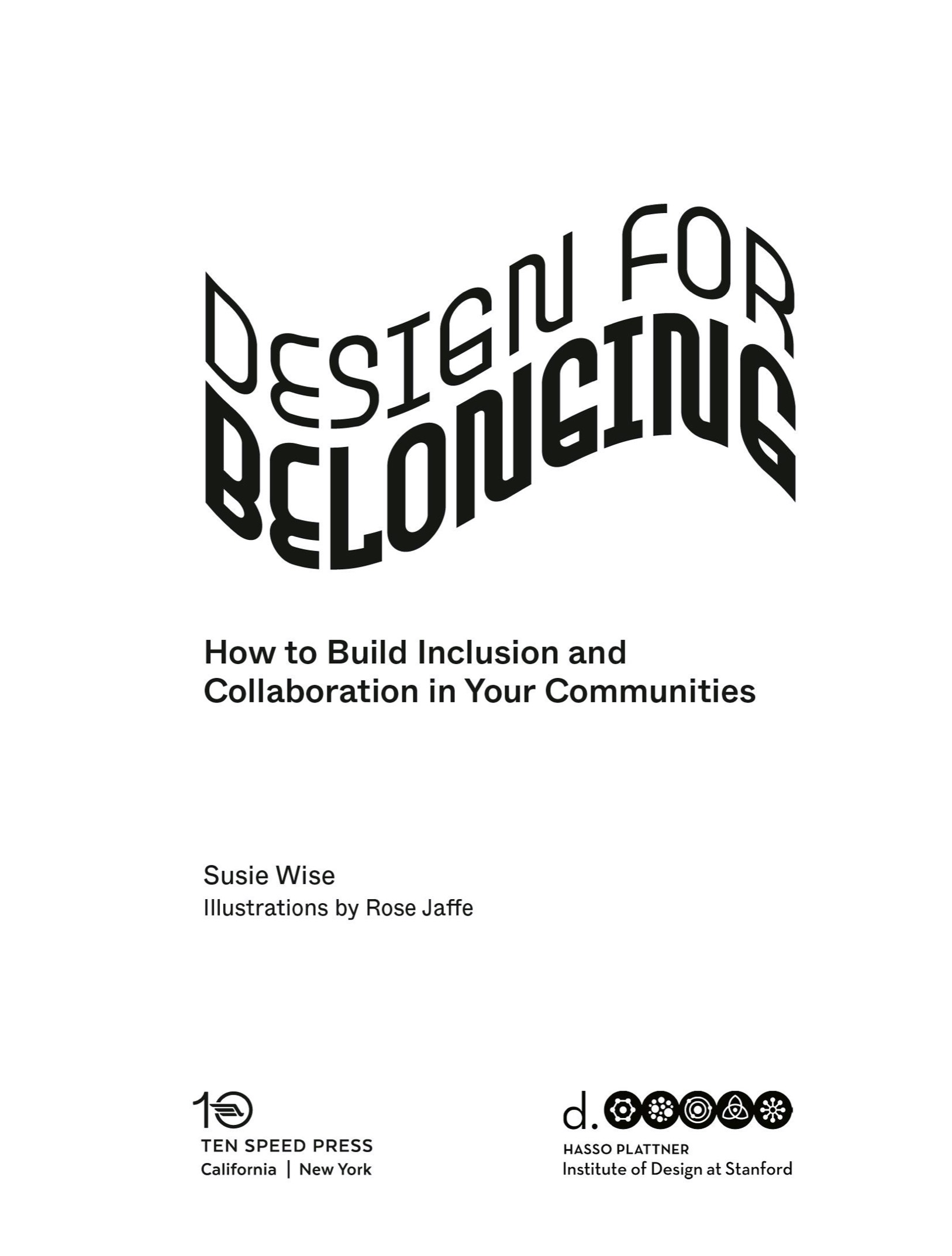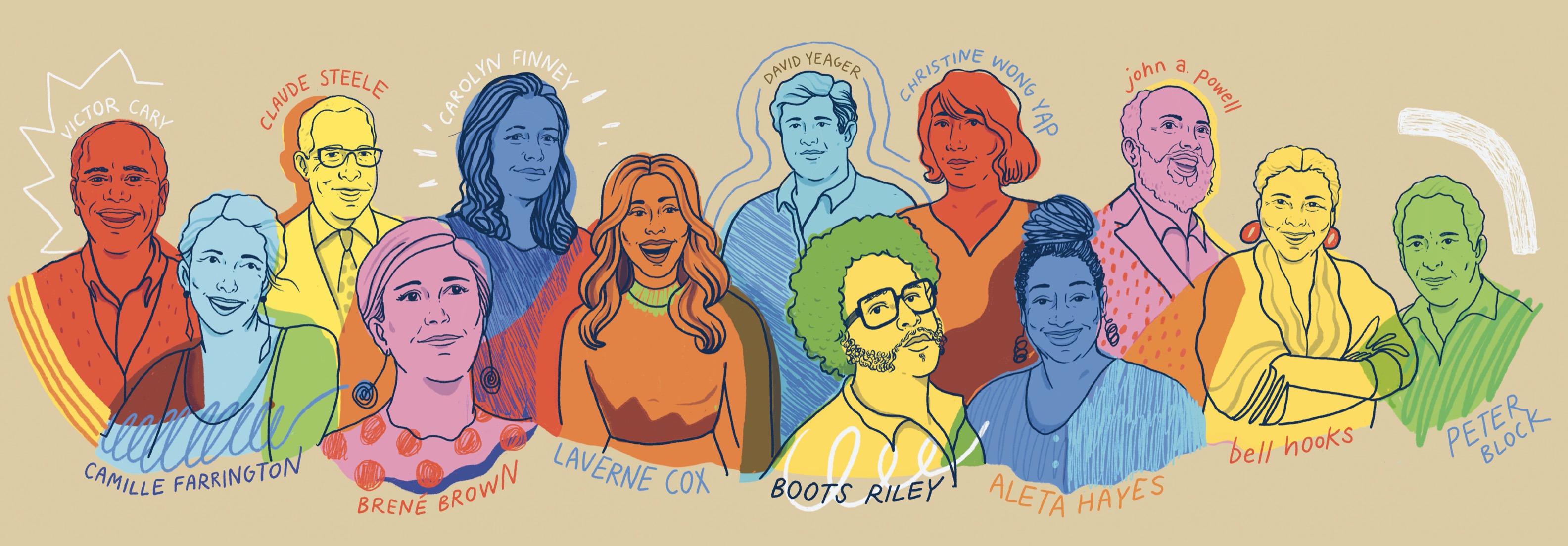Copyright 2022 by The Board of Trustees of the Leland Stanford Junior University on behalf of Hasso Plattner Institute of Design
Illustrations copyright 2022 by Rose Jaffe
All rights reserved.
Published in the United States by Ten Speed Press, an imprint of Random House, a division of Penguin Random House LLC, New York.
www.tenspeed.com
Ten Speed Press and the Ten Speed Press colophon are registered trademarks of Penguin Random House LLC.
Library of Congress Cataloging-in-Publication Data
Names: Wise, Susie, author.
Title: Design for belonging : how to build inclusion and collaboration in your communities / Susie Wise, Stanford d. School ; illustrations by Rose Jaffe.
Description: First Edition. | Emeryville, California : Ten Speed Press, 2022. | Includes bibliographical references and index.
Identifiers: LCCN 2021017019 (print) | LCCN 2021017020 (ebook) | ISBN 9781984858030 (trade paperback) | ISBN 9781984858023 (ebook)
Subjects: LCSH: Social integration. | Marginality, Social. | Communities.
Classification: LCC HM683 .W57 2022 (print) | LCC HM683 (ebook) | DDC 305.5/68dc23
LC record available at https://lccn.loc.gov/2021017019
LC ebook record available at https://lccn.loc.gov/2021017020
Trade Paperback ISBN9781984858030
Ebook ISBN9781984858023
Acquiring editor: Hannah Rahill | Editor: Julie Bennett
Art director and print designer: Emma Campion | Print production designers: Mari Gill and Faith Hague
Print typefaces: Hope Mengs d.sign, Grilli Types GT Super Display, and Dinamos Whyte
Print production manager: Jane Chinn
Copyeditor: Kristi Hein | Proofreader: Lisa Brousseau | Indexer: Michael Goldstein
Publicist: David Hawk | Marketers: Daniel Wikey and Windy Dorresteyn
d.school creative team: Charlotte Burgess-Auburn, Scott Doorley, and Nariman (Nadia) Gathers
Ebook production manager: Eric Tessen
rhid_prh_6.0_139713517_c0_r0
Contents
A Note from the d.school
At the Stanford d.school, design is a verb. Its an attitude to embody and a way to work. The core of that work is trying, to the best of ones abilities, to help things run more smoothly, delight more people, and ease more suffering. This holds true for you, toowhether design is your profession or simply a mindset you bring to life.
Founded in 2005 as a home for wayward thinkers, the d.school was a place where independent-minded people could gather, try out ideas, and make change. A lot has shifted in the decade or so since, but that original exuberant and resourceful attitude is as present today as it was then.
Our series of guides is here to offer you the same inventiveness, insight, optimism, and perseverance that we champion at the d.school. Like a good tour guide, these handbooks will help you find your way through unknown territory and introduce you to some fundamental ideas that we hope will become cornerstones in your creative foundation.
Circumvent your fears and do the work that matters to you in Drawing on Courage . Delve into the unknown to find new opportunity in Navigating Ambiguity . And in this book, learn to build inclusive communities where everybody has room to collaborate and flourish.
Welcome to Design for Belonging !
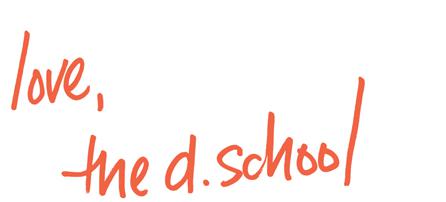
Turn the page to explore moments to notice and investigate.
Hello! Im so glad youre here.
Belonging begins when we acknowledge each other as people. Typed words on a page may feel distant, but I wrote this book for you. And for us! Because when we work together, we can make the promise of belonging a reality. We can transform our homes, communities, and the world into stronger and more connected places. My hope is that you find a sense of belonging in these pages.
Since we are meeting for the first time, I will let you know that I am a cis-gendered, White woman, currently not living with a disability. I am positioned in our culture as a recipient of White privilege. I am doing this work as an anti-racist ally and equity designer, endeavoring to move the field of design forward using its tools to redesign unjust systems. I am hopeful that you will join me and use these tools to make change happen.
My work is varied, but all of it is rooted in belonging. My through line has always been to empower people to tackle issuesfrom school curriculum to community-based social justice to corporate cultureby designing new ways to learn and interact. Through this work I have come to recognize, and to truly believe, that belonging is the thing that matters most. And its not just my personal experience that proves it; the science is clear. Studies from researchers like Bren Brown, Claude Steele, and the Mindset Scholars Network show that belonging is the key that unlocks the best in everyone. Kids who feel they belong learn better in school. Elders with a sense of belonging stay healthy and aware. Immigrants who belong thrive in their new communities. Having a sense of belonging leads to flourishing in every environment and group, big and small, from your home to the culture at large.
Belonging helps us to be fully human. It gives us permission to share our talents and express our life force. It enables cooperation, collaboration, and the ability to work across difference. It emboldens our creativity and our problem-solving abilities. When people feel like they belong, they are able to be their best and do their best.
Design has the power to change things for the better, to address historic wrongs created through exclusionary design processes. If you want to create change, youve gotta make something. But you dont have to call yourself a designer to benefit from the information in this book; you just have to use its tools to make things happen. Whether you are a parent, manager, teacher, community organizer, or leader of almost any sort, you can design a space that helps people feel they belong. And thats what I explore in this book: the intersection of belonging and design. I like to express this intersection as belonging + design because it suggests that the process is additive, that were building something bigger. In this sense, belonging + design = new ways of bringing people together, or even new ways of being people together.
So how do you design for belonging? In the coming pages, Ill explore three essential elements: the feeling of belonging, the moments during which belonging occurs, and the process of shaping your context so belonging can emerge.

